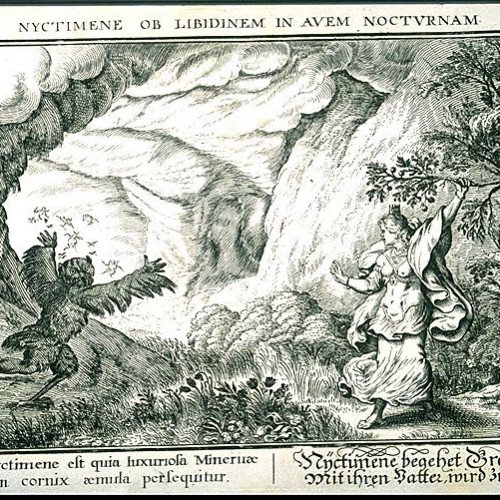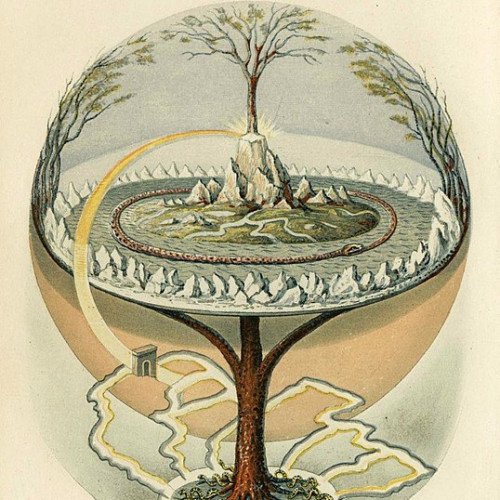Nyctimene (mythology) VS World tree

Nyctimene (mythology)
Nyctimene was, according to Roman mythology, the daughter of Epopeus, a king of Lesbos. In some versions of the story she was raped by their father, while in others she was seduced seduced. Out of shame or guilt, she fled to the forest and refused to show her face in daylight. Taking pity on her, Minerva transformed her into the nocturnal owl which, in time, became a widespread symbol of the goddess. In Ovid's Metamorphoses, the transformation was a punishment for an unspecified crime.In Metamorphoses, Cornix (the crow) complains that her place as Minerva's sacred bird is being usurped by Nyctimene, who is so ashamed of herself that she will not be seen by daylight.Her name has been given to a genus of bats and an asteroid.
Statistics for this Xoptio

World tree
The world tree is a motif present in several religions and mythologies, particularly Indo-European religions, Siberian religions, and Native American religions. The world tree is represented as a colossal tree which supports the heavens, thereby connecting the heavens, the terrestrial world, and, through its roots, the underworld. It may also be strongly connected to the motif of the tree of life, but it is the source of wisdom of the ages. Specific world trees include égig érő fa in Hungarian mythology, Ağaç Ana in Turkic mythology, Modun in Mongol mythology, Yggdrasil in Norse mythology, Irminsul in Germanic mythology, the oak in Slavic, Finnish and Baltic, Iroko in Yoruba religion, Jianmu in Chinese mythology, and in Hindu mythology the Ashvattha (a Ficus religiosa).